| Columns Retired Columns & Blogs |
Red Shift: Doppler distortion in loudspeakers Page 3
Even when this degree of care is taken over interpolation accuracy and filtering, there remains the possibility that some subtle signal degradation will occur, not least because of the addition of TPDF (Triangular Probability Density Function) dither, prior to requantizing the processed signal, raises the noise floor. To account for this, I included in the software a "Generate Reference" option, which applies the same processing steps without the addition of frequency modulation, and generates all output samples from points midway between interpolated samples to ensure that the maximum interpolation error is included. It was this reference file, not the original, that was compared with the processed file in the listening test.
A block diagram of the principal processing stages is shown in fig.4. Note that the first step is to divide up the frequency range as it would be in a typical two-way speaker, with only the low-frequency range being subject to Doppler processing. A crossover frequency of 3kHz was chosen, with fourth-order Linkwitz-Riley high-pass and low-pass filter alignments to ensure a flat frequency response when the two portions of the frequency range are reunited. A conventional Linkwitz-Riley crossover introduces phase distortion, but that was obviated here by using a bidirectional IIR (Infinite Impulse Response) filtering technique. Second-order filtering is applied to the signal in both time directions (forward and backward) to achieve the required fourth-order slopes with linear phase.
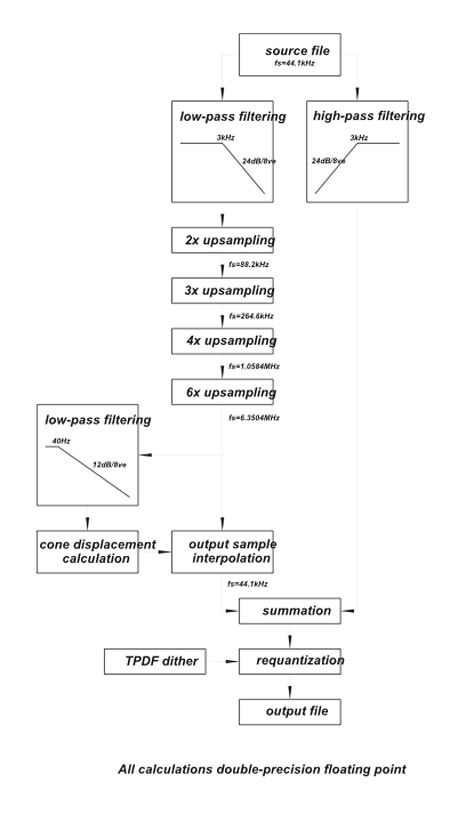
Fig.4 Block diagram of Keith Howard's Doppler-simulation software.
Assuming closed-box bass loading with a total system Q of 0.5 allows the same technique to be used to model the speaker's bass rolloff, although in this case each filter pass is first-order. A bass resonance frequency of 40Hz was chosen for the test, so the response of the modeled speaker would be –6dB at this frequency. (There can't be many two-ways with a 40Hz bass resonance, but, as I said, this is a worst-case simulation exercise.) Although this rolloff was used to calculate the cone displacement for the Doppler processing, it was not applied to the signal itself.
Eagle eyes will note that no low-pass filtering is applied as part of the decimation process (output sample interpolation). This is because the initial 3kHz rolloff, coupled with the falling spectral content of the test excerpts, makes it unlikely that significant aliasing will be introduced. In any case, if audible aliasing does occur, then this will be (largely) repeated in the comparison file.
Fig.5 shows three spectra, generated during the software's verification, that indicate that any errors are at a very low level. Fig.5a shows the spectrum of the test signal, comprising three sine components, at 100Hz, 1kHz, and 10kHz. Fig.5b shows the spectrum of the reference generated by the simulation software with no Doppler applied (note the raised noise floor caused by the additional dithering), and fig.5c that for the Doppler-processed signal.
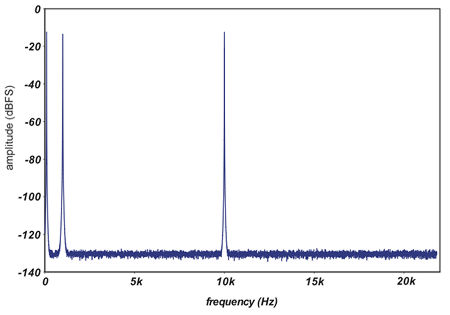
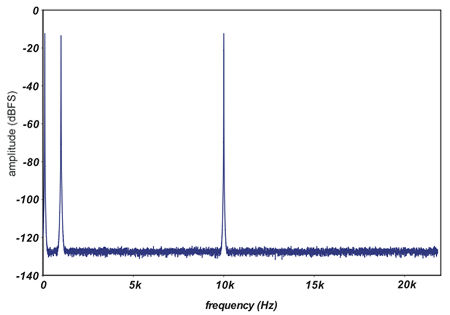
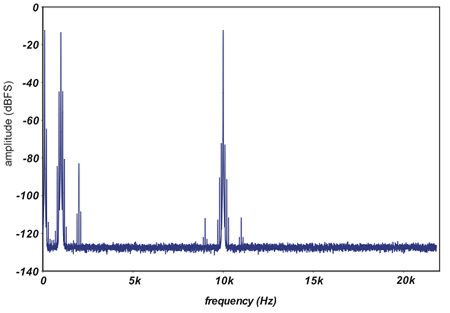
Fig.5 Spectra of a three-tone test signal used to verify the software: (a) input signal, (b) processed comparison file, (c) the full Doppler output file.
Listening results
Choosing appropriate source material is key to any listening test for Doppler distortion. Ideally, you're looking for sustained high-level bass content coupled with a clearly defined but sparse harmonic structure at higher frequencies, so that there will be minimal masking of the FIM sidebands. You can either sift available recordings for suitable examples or, more practically, concoct your own, which is what I did.
Instruments of the flute family are ideal for providing the delineated high-frequency harmonic structure. I used the single-instrument flute recording (track 12) from the European Broadcasting Union's CD of Sound Quality Assessment Material (SQAM). A short excerpt was taken from this—a few seconds of the right material are quite enough for detecting whether Doppler sidebands are audible—and mixed with a 100Hz sinewave at –10dBFS to ensure constant high-level low-frequency excitation. This file was then processed to simulate peak diaphragm excursions of 1mm, 3.16mm, and 10mm (ie, in 10dB steps), following which the 100Hz component was (largely) removed from the output files by mix-pasting it a second time, but in antiphase.
All the files, including the processed reference, were then burned to CD for replay via a low-jitter CD player (the Meridian 508.24). High-quality headphones (Precide Ergo AMT) were used for the listening rather than loudspeakers, to ensure the minimum of residual Doppler and other nonlinear distortions. Spectra for the left channels of the original, reference, and processed files are shown in fig.6 for comparison.
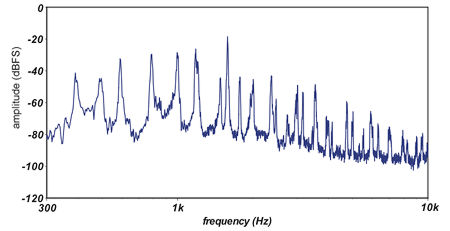
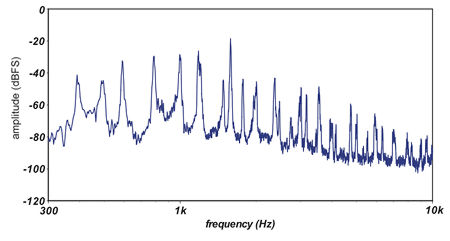
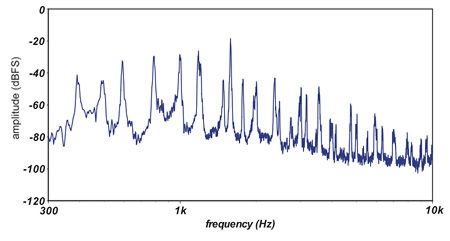
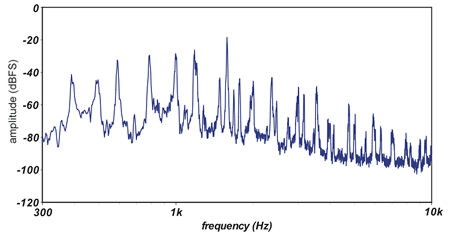
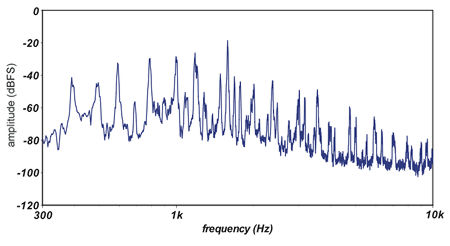
Fig.6 Spectra (300Hz–10kHz) of the flute excerpt used for the listening: (a) original, (b) processed reference, (c) Doppler 1mm, (d) Doppler 3.16mm, (e) Doppler 10mm.
The results were intriguing. Distortion of the flute was gross at 10mm peak diaphragm displacement and not in the least bit euphonic. On the contrary, Doppler made the sound as harsh as you might expect of a distortion mechanism that introduces intermodulation products. At 3.16mm peak displacement (below Fryer's suggested detectability threshold) the distortion level was obviously lower but still clearly audible; and even at 1mm it could still be heard affecting the flute's timbre and adding "edge."
Everyone who uses a two-way speaker (me included) can take heart from the fact that most music signals are less revealing of Doppler distortion than this special brew. But these findings undermine the view, widely accepted in the last two decades, that Doppler distortion in loudspeakers is not something we should trouble about. Having done the listening, I side with Moir and Klipsch more than with Fryer, Allison, and Villchur on this issue—something that may come as no surprise to anyone who has heard the effects of low-level jitter and sees where the Fryer criterion appears in fig.2.
It has often been claimed that, with a two-way speaker, there are audible benefits to using a crossover frequency below the typical 3kHz, the usual explanation being that this removes the crossover from the ear's area of greatest sensitivity. But I wonder. Perhaps this not-uncommon experience actually has much more to do with the D word. A three-way solution is potentially even better. Three-way speakers bring new design challenges, of course, in particular the need to achieve another perceptually seamless handover between drivers. But from the Doppler perspective, having a crossover for the bass driver at 400Hz or 500Hz is, unquestionably, better.
- Log in or register to post comments




































